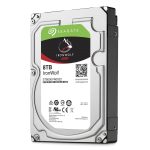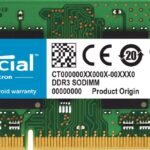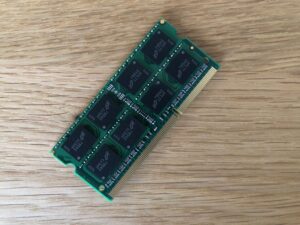Ich hatte bereits Anfang Januar darüber berichtet, dass Synology ein Update für die Oberfläche/Betriebssystem DSM (DiskStation Manager) angekündigt hat. Leider wurde die Preview immer wieder verschoben, Anfang September war es dann aber endlich soweit: die Preview ist verfügbar.
In diesem Beitrag möchte ich einen kurzen Überblick über die Teilnahme an dem Preview Programm und die wesentlichen (Design-)Änderungen geben.
1. Synology Preview Programm
Als Teilnehmer des Preview Programms haben mutige User die Möglichkeit, das neue DSM 7.0 bereits zu installieren und auszuprobieren.
Achtung: DSM-Upgrades sind irreversibel, einmal durchgeführt kann es nicht mehr rückgängig gemacht werden. Eine Preview Version ist eine in Arbeit befindliche Version und sollte nicht auf einem Produktivsystem eingesetzt werden. Das Upgrade wirkt sich zwar nicht auf die gespeicherten Daten aus, dennoch sollte vorab ein Backup angelegt werden.
1.1 Roadmap
Preview
Größte Änderungen abgeschlossen
Registrierung & nur mit Einladung
Forenbereich für Teilnehmer
Open Beta
Feature vollständig vorhanden
Für die Öffentlichkeit zugänglich
Release-Kandidat
Abschließende Optimierung und kleinere Qualitätsverbesserungen (Beschreibungen, Hilfedateien, etc.)
Official Release
1.2 Unterstützte Modelle
- FS Series: FS3400, FS3017, FS2017, FS1018
- SA Series: SA3400
- 20-Series: RS820RP+, RS820+, DS620slim, DS420j, DS120j
- 19-Series: RS1619xs+, RS1219+, RS819, DS2419+, DS1819+, DS1019+, DS419slim, DS119j
- 18-Series: FS1018, RS2818RP+, RS3618xs, RS2418RP+, RS2418+, RS818RP+, RS818+, DS3018xs, DS1618+, DS918+, DS418play, DS418, DS418j, DS718+, DS218+, DS218play, DS218, DS218j, DS118
- 17-Series: FS3017, FS2017, RS18017xs+, RS4017xs+, RS3617xs+, RS3617RPxs, RS3617xs, RS217, DS3617xs, DS1817+, DS1817, DS1517+, DS1517
- 16-Series: RS18016xs+, RS2416RP+, RS2416+, RS816, DS916+, DS716+II, DS716+, DS416play, DS416slim, DS416, DS416j, DS216+II, DS216+, DS216play, DS216, DS216j, DS216se, DS116
- 15-Series: RC18015xs+, DS3615xs, DS2415+, DS2015xs, DS1815+, DS1515+, DS1515, RS815RP+, RS815+, RS815, DS415+, DS415play, DS715, DS215+, DS215j, DS115, DS115j
- 14-Series: RS3614xs+, RS3614RPxs, RS3614xs, RS2414RP+, RS2414+, RS814RP+, RS814+, RS814, RS214, DS414slim, DS414, DS414j, DS214+, DS214play, DS214, DS214se, DS114
- 13-Series: RS3413xs+, RS10613xs+, DS2413+, DS1813+, DS1513+, DS713+, DS213j
- Other: VirtualDSM
1.3 Anmeldung Preview Programm
Unter dem folgenden Link gelangt Ihr zu der Synology Preview Internetseite und hier zum Download, falls ihr Teilnehmer des Preview Programms seid.
Über den Download Button gelangt ihr zum Sign In Bereich und werdet dann über euer Synology Konto zum Download Center des Preview Programms. Nach Eingabe eures DiskStation Modells werden die verfügbaren Downloads / Pakete angezeigt. Neben dem Download des eigentlichen Betriebssystems (DSM 7) stehen weitere Pakete zum Download bereit, die Liste es recht lang.
Ganz unten sind dann noch die angepassten und neuen Utilities (z.B. Clients für Mac, Windows) und die Mobile Apps (für die Installation ist die Verwendung von der Test Flight App notwendig).
1.4 Infos & Download
Beigefügt habe ich hier einmal wichtiges Upgrade Informationen und eine Übersicht der Änderungen (Release Notes).
Important Upgrades Notes
Before Update
- DSM 7.0 can only be updated from DSM 6.2.
- Reserve extra time to complete DSM 7.0 update. The DSM update takes 10 to 20 minutes, while package update may take more than an hour. The actual time depends on the computing power of your model, the number of media indexing files, and the number of packages installed.
DSM
- USB devices (Wi-Fi dongle, Bluetooth dongle, 3G/4G dongle, USB DAC/speaker, and DTV dongle) are no longer supported. If your Synology NAS is currently connected via a wireless dongle, it will be disconnected after the update.
- Creating SSD caches on block-level LUNs is no longer supported. Existing SSD cache for block LUNs will function normally after the update.
- DDSM is incompatible with DSM 7.0. To continue using DDSM, you should retain the current DSM version. To update to DSM 7.0, please delete DDSM first.
- To provide comprehensive TLS support and ensure compatibility, the TLS/SSL profile level in Modern compatibility will automatically change to Intermediate Compatibility after the update.
- EZ-Internet is merged with Router Configuration in Control Panel. To set up port forwarding, go to Control Panel > External Access > Router Configuration.
- Python3 is merged into DSM as a built-in service. The original Python3 package will be unavailable in Package Center and you can remove it manually.
- The following DDNS providers are removed from the service provider list at Control Panel > External Access > DDNS:
CloudNS, DNO-O-Matic, DNSEXIT, Dynamic DO!.jp, Joker.com, RU-CENTER, TwoDNS.de, Variomedia, Zoneedit.com
Packages
- Synology Moments and Photo Station will be upgraded to and merged as Synology Photos. If you would like to use Synology Photos on your mobile devices, please install the iOS/Android app. See this page for more details.
- Cloud Station Server and Cloud Station ShareSync will be upgraded to and merged with Synology Drive Server. If you are using any Cloud Station Suite applications (Cloud Station Server, Cloud Station Drive, Cloud Station Backup, Cloud Station ShareSync, or DS cloud), you must switch to their counterparts in the Synology Drive Suite to ensure compatibility. See this page for more details.
- Active Backup for Business is incompatible with DSM 7.0 Preview. To continue using Active Backup for Business, you should retain the current DSM version.
- Central Management System no longer supports managing Synology NAS with DSM version earlier than DSM 6.0. Managed servers that are unable to update to DSM 6.0 should be disjoined from Central Management System before the update.
- DiXiM Media Server and sMedio DTCP Move are incompatible with DSM 7.0. To continue using these packages, you should retain the current DSM version. To update to DSM 7.0, please uninstall them in Package Center first.
- MariaDB 5 is incompatible with DSM 7.0. To update to DSM 7.0, please install MariaDB 10, migrate the database, and uninstall MariaDB 5 in Package Center first.
- Packages published by third-party developers are currently not supported. You can update the packages in Package Center when compatible versions are released.
- The following packages are no longer supported:
Cloud Station Server (replaced by Synology Drive Server), Cloud Station ShareSync (replaced by Synology Drive Server), Discourse, DokuWiki, Drupal, Drupal8, GitLab, GLPI, Java7, Java8, LimeSurvey, Logitech® Media Server, LXQt, Magento, Magento2, MantisBT, Moments (replaced by Synology Photos), Mono, Moodle, Node.js 0.10, Node.js 0.12, Node.js v4, Node.js v6, Node.js v8, Odoo 8, OpenERP 6.1, OpenERP 7.0, OrangeHR, Orthanc, osCommerce, osTicket, PHP PEAR, Photo Station (replaced by Synology Photos), phpBB, Piwik, Podcast Generator, PrestaShop, PrestaShop1.7, Redmine, Ruby, Spree, SugarCRM, SVN, Synology File Manager, Tomcat6, Tomcat7, Webalizer
Release Notes
What’s New
- Storage
- A new revision of Storage Manager:
- Added visuals of Synology NAS models with their drive slots, expansion units, and built-in M.2 slots to help users view drive status.
- Enhanced usability with a clearer display of the relationship between storage pools, volumes, and SSD caches.
- Enhanced the setup process of Hot Spare and Data Scrubbing.
- Added a feature to guide users through configuring newly inserted drives.
- New features for storage pools, volumes, and drives:
- Enhanced the access performance of RAID 6 by 80% on Broadwellnk (FS1018, SA3400, RS1619xs+, DS3018xs) and Grantley (FS3017) CPUs.
- Enhanced the access performance of degraded RAID 6 by 70%.
- Added display of the storage usage of each category item on Btrfs volumes.
- Added a new Fast Repair mechanism to reduce the time needed for RAID repair based on storage usage and thus reduce the time of RAID degradation.
- Added the ability to replace a drive in a healthy storage pool with an unused one without interrupting services or causing storage pool degradation.
- Added the ability to automatically replace “Critical” or “Failing” drives in protected storage pools with Hot Spare.
- Added the Auto Repair feature to automatically run a RAID repair when a malfunctioned drive is replaced with a healthy one in the same drive slot.
- Added the ability to eject a storage pool on an expansion unit to ensure the safe removal of drives without interrupting system services.
- Added the ability to mount storage pools from drives that are inserted after the device has been powered on without interrupting system services.
- Added support for Western Digital® Device Analytics™ (WDDA) health analytics service for compatible WD Purple™, Red™, and Red™ Pro drives.
- New features for SSD Cache:
- Added the ability to create and remove SSD caches without interrupting system services.
- Added the new SSD Cache Advisor to monitor I/O accesses and provide more accurate capacity recommendations.
- Added the ability to pin all Btrfs metadata to SSD caches to enhance the performance of accessing small files and shorten the response time when accessing files regularly.
- Added the ability to activate automatic protection on SSD read-write caches with multi-drive fault tolerance.
- Added support for the quick flush mechanism to speed up write-backs from SSD caches to HDDs when automatic protection is activated.
- A new revision of Storage Manager:
- Resource Monitor
- Revamped the display of recorded performance metrics with a finer granularity of data points and the ability to focus on certain time points.
- Enhanced monitoring transparency of system services by separating larger, unrelated processes.
- Added the ability to manage currently accessed files and their connected users to better handle locked files.
- File System/File Services
- Supports enabling/disabling file compression for shared folders created on DSM 7.0.
- Enhanced file compression ratio and added display for the current ratio for each shared folder.
- Added support for cross-protocol locking between SMB and AFP.
- Supports accessing encrypted shared folders via NFS.
- Enhanced Btrfs performance and lowered I/O latency.
- Modularized the SMB file service into a package.
- Allows users to enable/disable SMB transfer logs for permission changes, providing more flexible transfer logs.
- User Management
- Added the ability to delegate predefined administrator roles to non-administrator user accounts and allow them to manage certain services and system settings, offering more flexible permission management.
- Added the ability to require imported users to change their passwords after their initial DSM logins.
- Added the ability to assign user accounts from import lists to specific groups.
- Domain/LDAP Integration
- Enhanced LDAP client authentication performance by reducing the number of queries sent with a caching mechanism.
- Security
- Added the ability to block USB and console ports.
- Enhanced QuickConnect connection process to strengthen security.
- Provides only TLS 1.3 support for the Modern Compatibility option for TLS/SSL profile level.
- Added the ability to set 2-factor authentication as mandatory for specific users or groups.
- User Experience
- Enhanced user experience for DSM first-time installation and Synology Account related service setup (e.g. QuickConnect).
- Added information and usage tips about security, notification, and other recommended settings in DSM Help.
- Added the ability to back up DSM system configuration to a connected Synology Account.
- Added severity levels to notifications for better categorization of events.
- Enhanced user interface responsiveness to launch installed packages and services faster.
- Enhanced login performance when connecting from external networks.
- Enhanced user experience for package update processes by displaying the update status with package icons on the DSM desktop.
- Supports resetting the passwords of all user accounts in the administrators group by pressing the RESET button on Synology NAS for 4 seconds.
- Enhanced Control Panel usability by reorganizing related functionality together:
- Added a new Synology Account tab to consolidate future services provided through Synology Account.
- Consolidated Domain/LDAP options to be configured in a new unified wizard.
- Consolidated QuickConnect settings into the External Access tab.
- Consolidated User and Groups settings.
- Consolidated Theme and Application Portal options into Login Portal tab.
- Consolidated email notification options into Notification > Email tab.
- Consolidated WS-Discovery into File Services > SMB.
- Consolidated Network > DSM Settings into Login Portal > Web Services.
- Relocated the SMB Server Signing option to File Services > SMB > Advanced Settings.
- Moved Shared Folder Sync into the File Services tab.
- Moved the Enforce 2-factor authentication option into the Security tab.
- Modularized DHCP Server into a package.
Nach dem Download des neuen DSM 7.0 könnt ihr dieses über die Weboberfläche der DiskStation manuell installieren.
Achtung: DSM-Upgrades sind irreversibel, einmal durchgeführt kann es nicht mehr rückgängig gemacht werden. Eine Preview Version ist eine in Arbeit befindliche Version und sollte nicht auf einem Produktivsystem eingesetzt werden. Das Upgrade wirkt sich zwar nicht auf die gespeicherten Daten aus, dennoch sollte vorab ein Backup angelegt werden.
1.5 Installation
Über die DSM Weboberfläche geht ihr zur Systemsteuerung -> Aktualisieren & Wiederherstellen und wechselt dort zuerst auf den Reiter Sicherung der Systemkonfiguration. Ein, wie oben empfohlenes, separates Backup empfehle ich jedem im Vorfeld bzw. eine Installation der Preview Version auf einem Nicht-Produktivsystem.
Nach erfolgter Sicherung der Systemkonfiguration wechselt ihr wieder auf den Reiter DSM -Aktualisierung und wählt nach dem Klicken auf den Button Manuelle DSM-Aktualisierung die im Vorfeld heruntergeladene Datei des DiskStation Managers aus.
Durch die Bestätigung wird der Upgrade Prozess gestartet. Zuerst wird das Installationsprogramm vorbereitet und danach die DiskStation neu gestartet. Danach erfolgt die eigentliche Installation der neuen DiskStation Manager Version und im Anschluss das Upgrade der bereits installierten Pakete auf die jeweilige Beta Version.
Sollten Pakete installiert sein, zu denen es keine neue Version für DSM 7 gibt, erhältst du nach der Installation im Paketzentrum einen entsprechenden Hinweis.
Ist das Upgrade vollständig werdet ihr zum neuen Login des DSM weitergeleitet:
2.0 DSM 7.0 vs DSM 6.x
Hier könnt ihr einen ersten Blick auf das neue DSM 7.0 werfen. Screenshots vorher/nachher von einigen Ansichten, Paketen.
2.1 DSM Desktop
Der neue DSM Desktop sieht wesentlich moderner und hebt meine damalige “Kritik” bzw. Nachteil bei der Kaufentscheidung für ein neues NAS eindeutig auf.
2.2 Systemsteuerung / Paket-Zentrum / Sicherheitsberater / Docker
Im folgenden ein paar Screenshots von den obigen Bereichen bzw. Anwendungen.
Systemsteuerng
Paket-Zentrum
Sicherheitsberater
Docker
2.3 File Station
Die File Station ist ebenfalls optisch moderner geworden.
Ebenfalls einen neuen Look hat die Weboberfläche der File Station bekommen, wenn man diese von extern zugänglich macht. Der erste Screenshot zeigt den Login Screen und der zweite Screenshot die Web File Station.
In der Systemsteuerung -> Anwendungsportale -> Anwendungen kann man das Hintergrundbild folgender Web Anwendungen ändern (siehe Screenshot).
2.6 Ressourcen-Monitor und Active Insights
Der Ressourcen Monitor an sich bietet bis auf das neue Design keine Neuerungen, jedoch gibt es neu Synology Active Insights. Eine separate Web Oberfläche mit vielen Details zu der DiskStation.
2.7 Synology Photos / Moments
Aus Synology Photo Station und Moments wird im neuen DSM 7.0 Synology Photos. Über die Änderungen und wie die neue Anwendung eingerichtet wird in einem zukünftigen Beitrag mehr.
Soweit der erste tiefere Einblick in den neuen DiskStation Manager 7.0



















































Marco
11. November 2020 at 9:55
Vielen Dank für den guten Vergleich.
Mich würde ebenfalls interessieren, wie die Mobile Oberfläche aussieht.
Gerade wenn man Dateien teilt ist dies ein großer Nachteil wenn die Oberfläche z.B. von File Station weiterhin nicht optimiert währe.Sogar die Fritzbox Oberfläche hat dies elegant gelöst. Durch die jetztige Oberfläche kann ich den NAS Server leider nicht so verwenden, wie ich es gerne möchte. Mir ist durchaus bewusst das es hierfür eine App gibt, allerdings installiert sich nicht jeder mit dem ich ein paar Dateien austauschen möchte eine separate App.
Martin
11. November 2020 at 10:03
Hallo,
ich habe es eben einmal ausprobiert, mit einem iPhone 8 über Safari.
Die Weboberfläche ist nicht optimiert. Man hat also weiterhin die Probleme der Darstellung.
Also zumindest in dem derzeitigen Release.
Viele Grüße
Martin
Malte
15. November 2020 at 8:12
Danke für die detaillierte Vorstellung. Ich warte sehnsüchtig auf den richtigen Release und bin vor allen aus das neue Synology photos gespannt, da die bisherige Anwendung einfach antiquiert ist.
Freue mich auf deinen Beitrag dazu.
René
20. November 2020 at 9:48
Auch von mir vielen Dank für die Preview. Ich wäre tatsächlich etwas angepiselt, sollte man nicht ein Gros der Funktionen via Mobile-Browser bedienen können.